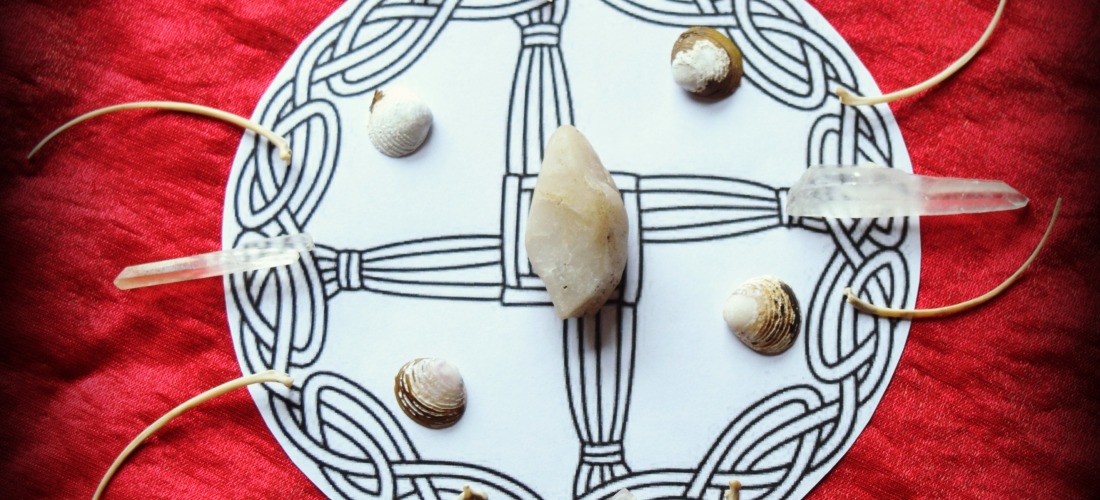This Saturday February 3 is the mid-point between Winter Solstice and Spring Equinox. This auspicious day heralds the first day of Spring, the day Winter passes and Spring emerges. This is often the day that we begin to notice that it is getting lighter – brighter a little earlier in the morning, and night falls a little bit later at night. And on this day as we celebrate the beginning of spring, we honor Brigit.
Brigit, Celtic Fire Goddess and Christian Saint, is associated with healing, poetry, and smithcraft. At this time of year, when the newness of spring is just under the ground and tucked within the buds forming on branches, I am reminded of the power of creation that bubbles all around us.
On this beautiful morning, I open my arms to breathe in this energy of creation and call upon Brigit to guide. She reminds me to create beauty in this world, and to do it with love. I am re-inspired by Anne Herbert’s phrase: Practice Random Acts of Kindness and Senseless Acts of Beauty.
Take a moment now as we perch on the verge of Spring. Hitch onto the power of the season and create beauty, for it is sorely needed in our world. A smile, a kind word, a lovely note, an exquisite image, a heart-felt touch – let Brigit guide us all to honor and utilize our power of creation. Then, open yourself to be blessed by the beauty all around you.
A note on date and nomenclature: This day—called a “cross-quarter” day because it falls between the solstice and equinox—is known variously as Imbolg (a Gaelic or Old Irish word meaning “in the belly,” referring to pregnant ewes), Candlemas (originating from the Church of England), or Brigit’s Day (honoring the Celtic Goddess and Catholic Saint). Imbolg is traditionally celebrated February 2nd, or the night before, on February 1st. For the Northern Hemisphere another more exact way of calculating it is when the Sun is at 15° Aquarius (in the Tropical calendar), which this year falls on February 3rd. See more about the seasons here http://www.archaeoastronomy.com/2015.html .

